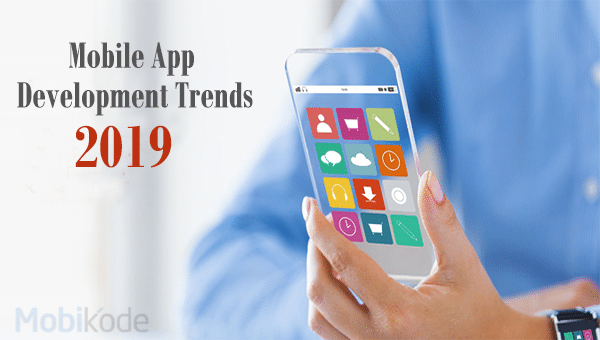Mobile applications were introduced 12 years ago with the iconic launch of iPhone in 2007, which was also the inception of consumer-ready mobile apps. Since then, the application market has been booming and has seen double-digit growth.
Internet usage has grown significantly all over the world, and companies have inhibited a digital strategy to reach to consumers through smartphones directly. By 2020, the world's leading mobile networks are set to launch the 5G trials which will give an enormous scope of web usage and increase the adoption of apps.
1. Instant Applications
Google introduced Instant Applications in 2016 which is a form of a native mobile application that is lightweight, easy to navigate, user-friendly and doesn't require to download the app. Instant applications save memory and serve the purpose seamlessly. Consumers struggle with their battery life and want to experience long hours by a single charge. In such cases, users will look for services which don't always need a mobile app to experience it.
2. AMP Pages- Faster & Lighter
Application performance management pages also known as AMP pages has been a massive hit in increasing the page speed, Search Engine ranking and User experience. AMP instantly delivers content and is used by the world's leading platforms like Facebook, Google, LinkedIn, and Twitter. AMP has a light HTML version of the page, using WebP images, and cleaner code.
3. Artificial Intelligence and Machine Learning
Artificial Intelligence and Machine Learning has deepened its roots into multiple consumer and enterprise level applications and is set to go deeper into the world around us. Bots and consumer-facing apps with assistance will see a rise this year, and vernacular applications can see greater penetration in cities like India with diverse cultures.
4. Augmented Reality, Virtual Reality, and Mixed Reality
All top 3 Technology leaders, Apple, Google, and Microsoft have played their first card of the deck in theAR/VR/MR Arena. Computing without a screen is the inevitable future and have use cases in more than 12 industries which include Marketing and Advertising, Automobile, Education & training, Military and more. 2019 will be the year where we can see more consumer apps in this arena which will be solving day to day life and provide extraordinary entertainment.
5. Blockchain Technology
It's been two years since the Bitcoin has peaked in 2017, and made the whole of the world aware of cryptocurrency, and blockchain as the dominating subject. However, the blockchain is much more than the cryptocurrency itself. The peer-to-peer ledger based technology is the ultimate game changer when it comes to privacy and business processes. The blockchain technology has great potential in solving the most significant issues in manufacturing plants, warehousing, and banking.
6. Cloud Computing Applications
Cloud Computing was the inevitable future of on-premise infrastructure, and it has taken the majority share, compared to on-premises hosting. Cloud Computing has various advantages like reduced hosting cost, better storage, secured servers, dynamic pricing, offshore service management as well as more number of startup companies are coming up with SaaS-based models to utilize the power of the cloud and use mobile application market as a distribution channel.
7. Mobile Wallets
Payments transactions and e-commerce have seen the most significant rise in the mobile application arena. More people are now comfortable transacting online, and it's just the start of digital money in the economy. Secure, safe, intuitive and always accessible payment gateways, make e-commerce seamless. Mobile applications like Amazon pay, PayPal, Google Wallet, and Paytm have become a stable product in the economy, and this will rise as more peer to peer transaction will take place.
8. Wearables and IoT
Smartphone and health fitness bands have become as ubiquitous as smart phones, and this is just the birth of wearable's. Integrating an operating system equipped with a hardware device at homes, offices, manufacturing units and servers exchanging data for insightful decisions is the ultimate potential of IoT apps. 2019 is the year of IoT entering our homes, kitchens, drawing rooms and even bathrooms to make life more simpler and intuitive.
9. On-Demand Applications
On-demand applications were also called a bubble in early 2010, but the business model is here to stay. Uber for X also known as on-demand applications have seen arise globally in terms of taxi and food delivery. M-commerce, analytics as software, business bots, and consumer AI will increase in this particular model.
10.Virtual Assistance Powered by Voice
Alexa, Google Home, and Siri have been a critical decision maker in today's digital discovery and music streaming which is equipped with voice commands and AI in the backend, have multiple use cases in the consumer space.
This virtual assistance will have various verticals in Healthcare, Finance, Automobile, Enterprise, and Banking.
